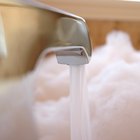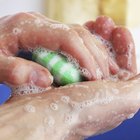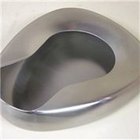
If you’re considering throwing a house party, a welcome and unique addition may be a foam machine. These machines are often found at nightclubs and produce large amounts of soapy bubbles and foam. Building a device to accomplish this at home is possible, so long as you or your guests don’t mind a little soap and water as the foam melts down.
Parts
While foam machines for personal use are available in stores already built, they are often expensive. The same effect can be achieved using some common household items. You will need a large plastic trashcan, a small inflatable pool, a fairly powerful shop-vac or standard vacuum with a decent-length hose, a garden hose that can be hooked at one end to a constantly running hot water source and, of course, soap to help form the foam. Dish soap is the best for this because it foams and lathers with relatively little agitation and the bubbles will be fairly thick and can stand up well over time. Be careful in choosing your soap though, as some dish soap can over time dry out your skin. Instead, opt for one of the many popular brands of dish soap that clearly label themselves as “non-irritating” or “non-drying.” This will ensure that even the longest foam parties don’t result in irritated skin on your guests. You will need a fairly large amount of soap, as every once in awhile you will need to refill the homemade machine to keep the suds coming.
Building the Foam Machine
Once you’ve acquired the necessary parts, the assembly and running of the foam machine is fairly straightforward. You will want to consider the area you’ll be having the party in before setting up the machine. The foam will eventually be rather thick, and you shouldn’t run the foam machine in a room that you aren’t perfectly fine with covering in soapy bubbles. As extra protection it’s advisable to put some plastic covering such as a tarp on the floor so that once the foam starts to melt somewhat, things don’t become too soaking wet under everyone’s feet. Once you have properly protected and secured the area, you can build the machine.
Place the trashcan right side up inside the inflatable pool somewhere in the room, preferably near the center so that foam distribution is even. However, if you need to move the pool and trashcan to allow for the hoses to reach other areas, you can do so later on. Run the garden hose from a hot water source into the trash can. Let it drape over the edge of the can and simply dangle inside, it doesn’t need to reach all the way to the bottom. Do the same with the vacuum hose, trying to place it inside the can directly next to the garden hose. If you have some heavy-duty tape on hand, you can tape the hoses together to make this easier. With the hoses securely run into the trashcan, turn on the hot water, then set the vacuum to “blow” or “reverse” and turn it on as well. You will need to adjust the flow of water so that it more or less matches the intensity with which the air is coming out of the vacuum hose. If done successfully the water will be blown around the inside of the trashcan and around the sides of it as soon as it exits the hose.
At this point you can empty a large amount of dish soap into the trashcan. Squirt liberal amounts directly into the center of the trashcan, where the force of the vacuum is blowing the water around rapidly. This will immediately create large amounts of foam that will soon overflow out of the trashcan and eventually start filling the room. If the foam stops rising at a decent rate simply add more soap, repeating whenever the foam needs “refilling.” The foam will be dense enough to actually spread around the room with your hands or shovels if it doesn’t immediately reach all areas. At times the inflatable pool may fill up slightly with water that didn’t make it out into the foam. If this happens you can opt to bail out the pool with a bowl or bucket, but large amounts of water typically shouldn’t accumulate if the trashcan is large enough.
Related Articles

Homemade Foaming Hand Sanitizer

Fun Things to Rent for Birthday Parties
Can You Bring Water into Disney World?

How to Keep Bathwater Hot

How to Make a Sparkler Rocket

How to Eradicate the Smell of a Dead ...

How to Use Shower Gel for a Bubble Bath

How to Cook a Pot of Steamers

How to Troubleshoot a Fog Machine

Why Soap Lathers

Places to Have a Wedding on Lake ...

How to Make a Pumpkin Spice Cappuccino

Things to Do Late at Night With Friends

How to Plan an In-home Casino Night

Skin Problems Caused by Swimming Pool ...

Types of Flat-Bottomed Boats

Swimming Pool Algae Problems

How to Bathe With an Arm Sling

Bedpan Cleaning

How to Make Stiff Peaks in Whipped Cream
References
Writer Bio
Brian Walker is an experienced writer who has contributed content to a number of print and online mediums, including major players in the financial, sports and news markets. His work has appeared on eHow.com, Associated Content, Yahoo and even financial news outlet TheStreet.com. He is a graduate of the University of South Carolina and holds a Bachelor of Arts in broadcast journalism.
Photo Credits
bubbles image by wkphoto from Fotolia.com